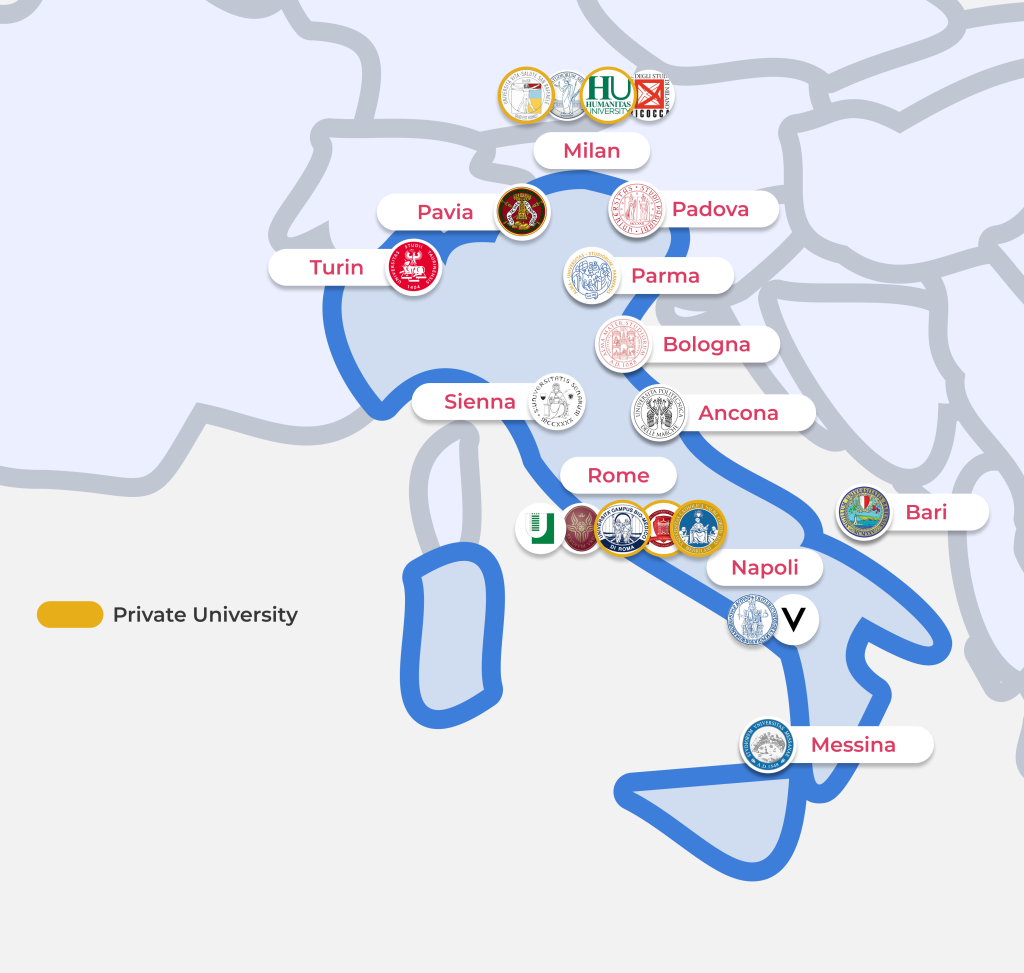

Ari Horesh University of Pavia, Italy
13th of June, 2023The official anouncement about the IMAT exam was released, here is everything we know so far!
A warm and hearty welcome to all the future doctors and surgeons out there! If you’re reading this, you’re likely considering (or have already decided) to embark on your medical journey in one of the beautiful, history-soaked universities of Italy. What an exciting adventure that lies ahead! But before you pack your bags and book your tickets to the land of da Vinci, there’s a gatekeeper you need to meet: the International Medical Admissions Test (IMAT).


The IMAT, for those new to the term, is your key to unlocking the door to undergraduate Medicine and Surgery programs in Italian universities. These programs, offered in the lingua franca of our times – English, are open to both Italian students and international aspirants. Traditionally, this test has been prepared by the esteemed Cambridge Assessment, a division of the University of Cambridge that’s globally recognized for setting standards in education.
But now, hold onto your hats because change is in the air! In a whirlwind of developments, it’s been officially announced that starting from 2023, the IMAT is undergoing a transformation. No longer will Cambridge be the architect of this crucial test. Instead, a new (and as yet unknown) entity will be stepping into these big shoes to shape the test.
Yet, amidst this atmosphere of anticipation and slight uncertainty, one thing is crystal clear. The official decree from the Italian Ministry of Education (MUR) has set the date for the IMAT exam as October 17, 2023. Mark your calendars, set your reminders, and gear up for this significant date that could well be the first day of the rest of your life in medicine!
In this article, we’ll dive into the depths of this change, exploring what the previous IMAT looked like, what changes we might expect in 2023, and how you can best prepare for these changes. So, buckle up for a roller-coaster ride of information and insights that will help you stay ahead of the curve in your IMAT 2023 preparation!
A Trip Down the Memory Lane: The IMAT of Yesteryears
Before we embark on the journey towards the unknown, let’s take a moment to look back and understand the IMAT that has been a rite of passage for thousands of medical students in the past years.
For a moment, imagine yourself seated in a room filled with the palpable energy of hundreds of aspiring doctors. In front of you lies a test paper, waiting for you to decode its mysteries. Yes, in its previous avatar, the IMAT was a good old pen-and-paper test. This wasn’t just any ordinary test, though. It was a carefully crafted amalgamation of 60 multiple-choice questions that tested your knowledge, understanding, and application across various disciplines.
These questions were divided into four parts, each targeting a specific area of your pre-med education.
- The journey began with 10 questions that tugged at your Logical Reasoning skills, pushing you to see patterns, make connections, and think critically.
- Next, came a new addition in 2019: 12 questions designed to test your General Knowledge. These questions, often rooted in current affairs and societal issues, tested how well you’ve kept up with the world around you.
- Then came a dive into the world of Biology with 18 questions that peered into your understanding of the natural world and the complex mechanisms that keep life ticking.
- The next stage was a foray into the world of Chemistry with 12 questions, looking for your grasp on atoms, molecules, reactions, and the countless wonders they create.
- Finally, the journey ended with a combined section of Physics and Mathematics, throwing 8 questions that pushed you to apply mathematical concepts and understand the physical world better.
And if you’re wondering about the scoring, each correct answer used to earn you 1.5 points, and every wrong answer would deduct 0.4 points from your score. Didn’t answer a question? No worries, that’s a safe 0 points, neither adding to nor detracting from your score.
But remember, this is not just a test of knowledge; it’s a race against time! You had a total of 100 minutes to navigate through these questions and mark your answers. And so, the test didn’t just evaluate what you know but also how effectively you could use your time.
That was the IMAT as we knew it. A challenging yet rewarding journey that opened the gates to the medical world for many. However, as with all things, change is the only constant. And so, we find ourselves on the brink of a new era of the IMAT. Stay tuned as we delve into what we know about the IMAT of the future, and how best you can prepare for it!
The Dawn of a New Era: The IMAT of 2023
As we stand on the cusp of a major shift, it’s time to explore what the IMAT of 2023 might look like. Let’s piece together the clues and tease out the possibilities of this new era of medical admissions testing.
With the departure of Cambridge from the picture, there’s a veil of mystery surrounding the design of the new IMAT. Who will take up the mantle? Will it be the Italian Ministry of Education itself, or will it be outsourced to another exam writer, similar to the Cambridge model? While the answer remains shrouded in mystery, one thing is certain: the test will go ahead, come what may.
But what about the format, you ask? Will the new test writer shake things up or stick to the well-trodden path? Well, we can certainly expect some changes, though the extent of these changes remains to be seen. As a best-case scenario, we might see minimal changes, given that the Italian version of the IMAT (Test di Medicina) has historically mirrored the IMAT in terms of format and syllabus, even without Cambridge’s involvement.
Yet, there are whispers of more radical changes on the horizon, inspired perhaps by the transformations happening with the Italian language medical admission test. The Italian language test, also known as the Test di Medicina, is undergoing a metamorphosis into the TOLC in 2023. Could the IMAT follow suit and mirror these changes? It’s a thrilling possibility!
The new format could see a shift from 60 questions to 50, a change in the marking scheme, and a reduction in the test duration to 90 minutes. There’s also a hint of an even more profound change – a transition from the traditional pen-and-paper format to a computer-based test conducted in-person. And, in another potential break from tradition, the test could be held twice a year.
Looking closer at the subject allocation, we might see a slight reshuffle. The Biology, Chemistry, and Physics sections could each comprise 15 questions to be answered in 25 minutes. Maths and Logical Reasoning might be merged into a single section with 13 questions to be solved in 25 minutes. And finally, the General Knowledge section could consist of 7 questions to be answered in 15 minutes. One particularly exciting prospect is that scores might be immediately available upon test completion, though official rankings would be released later.
However, it’s crucial to note that these are predictions, not confirmed changes. The exact contours of the new IMAT will only be revealed in due course. But don’t let this uncertainty deter you. Regardless of the changes, the heart of the test remains the same: to assess your knowledge, understanding, and skills relevant to a medical education. The Italian Ministry of Education, the true puppet master behind the IMAT, is unlikely to make drastic changes to the science syllabus or the nature of questions.

